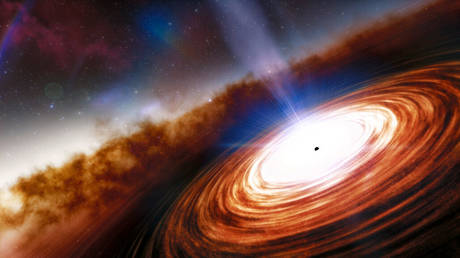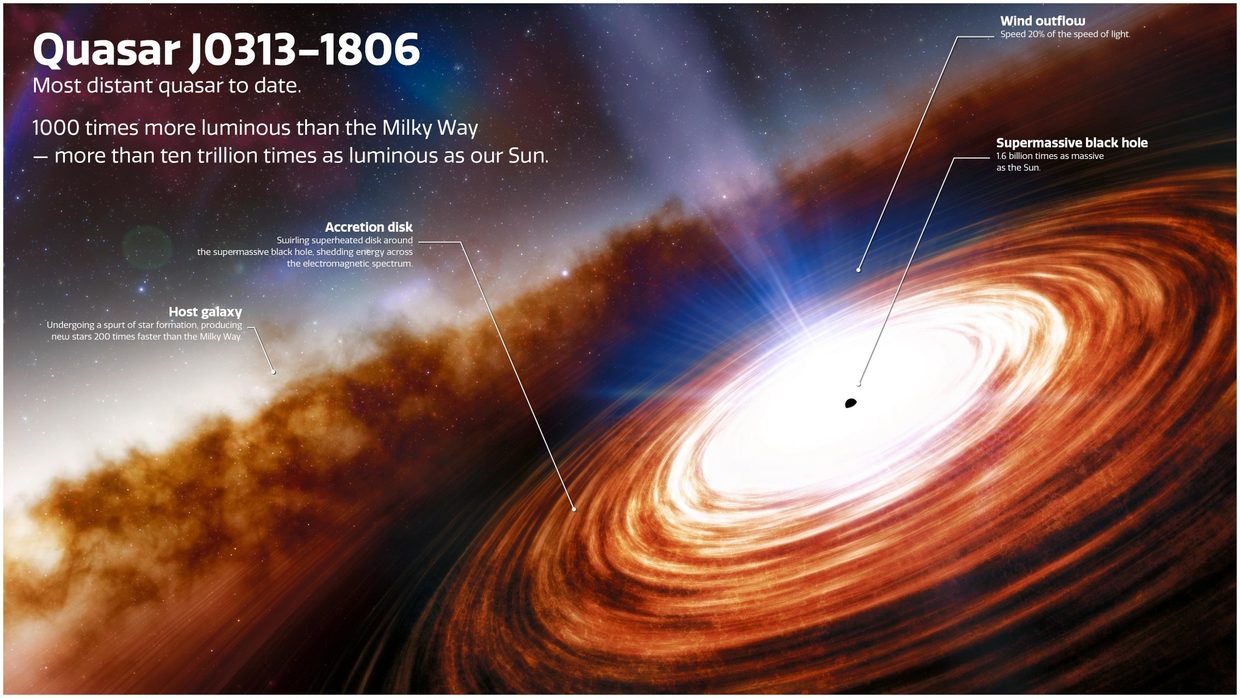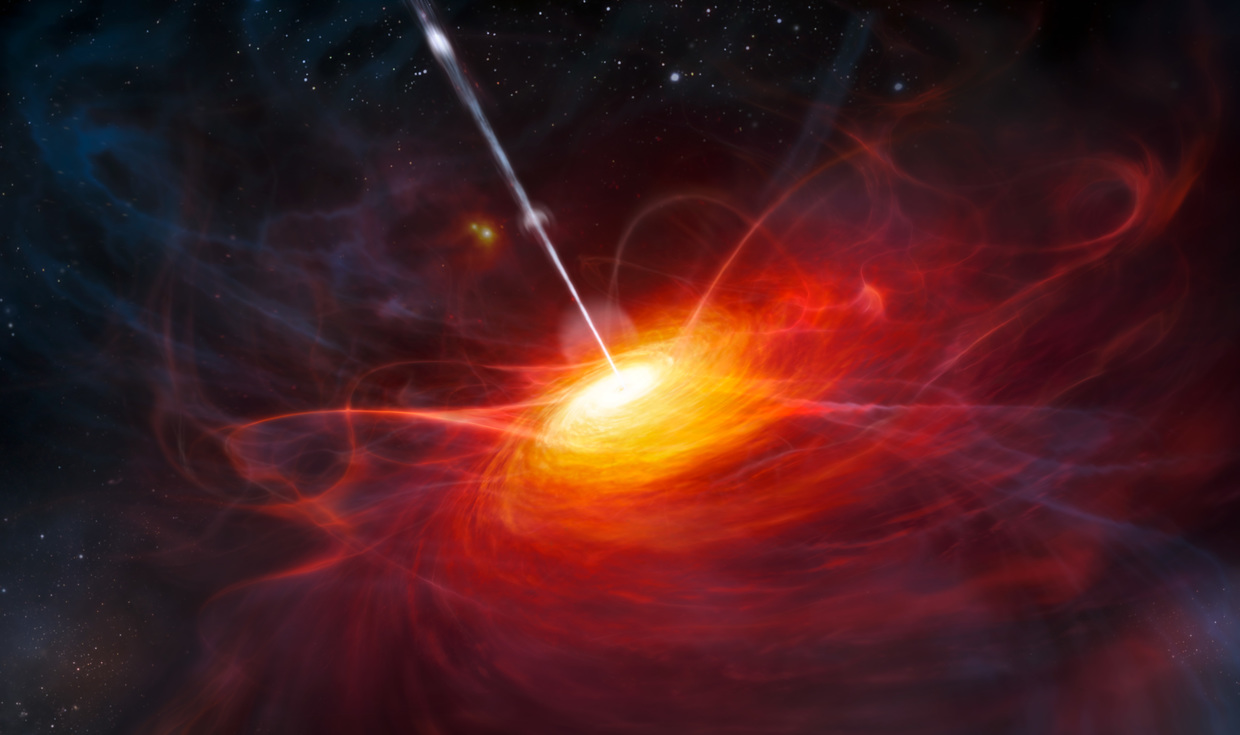
In a milestone breakthrough, astronomers have discovered the oldest supermassive black hole ever seen. The extraordinary find dates back to the early days of the universe and fuels the most distant quasar yet known.
The mammoth black hole weighs in with a mass equivalent to the combined mass of 1.6 billion suns. It dates all the way back to 670 million years after the Big Bang, when the universe was a mere five percent of its current age.
The black hole lies at the heart of the earliest quasar ever discovered. Quasars are the incredibly bright nucleus of an active galaxy. Their powerful glow is created by the extraordinary amounts of energy released by gas falling towards the supermassive black hole at their center.

The quasar is 13.03 billion light-years from Earth, making it the most distant quasar discovered to date. Distant quasars are crucial to understanding the nature of the early universe. They offer insights about the formation of black holes and massive galaxies in that period.
The object is the first of its kind to show evidence of an outflowing wind of super-heated gas escaping from the surroundings of the black hole at a fifth of the speed of light.
The astronomers also observed intense star formation activity in the galaxy where the quasar is located.
The extraordinary size of the black hole and the fact that it dates back to so early in the universe defies current scientific understanding of how these cosmic giants form.

Supermassive black holes are thought to grow from smaller seed black holes that devour matter. The University of Arizona researchers calculated that even if the black hole’s seed formed right after the first stars in the universe and grew as fast as possible, it would have needed a starting mass of at least 10,000 suns.
This is simply too fast for the current models of how seed black holes form, which is through the collapse of massive stars.
“This is the earliest evidence of how a supermassive black hole is affecting its host galaxy around it,” said the paper’s lead author Feige Wang.
“From observations of less distant galaxies, we know that this has to happen, but we have never seen it happening so early in the universe.”
The researchers hope to learn more about the quasar and black hole with future observations, especially with NASA’s James Webb Space Telescope, which is due to be launched later this year.
Think your friends would be interested? Share this story!




